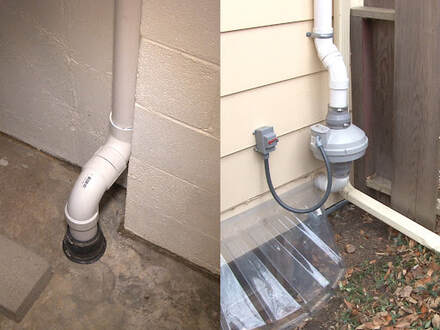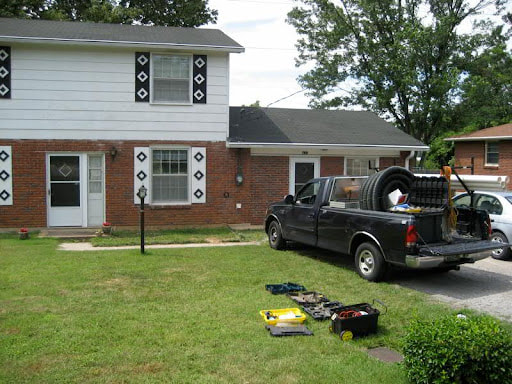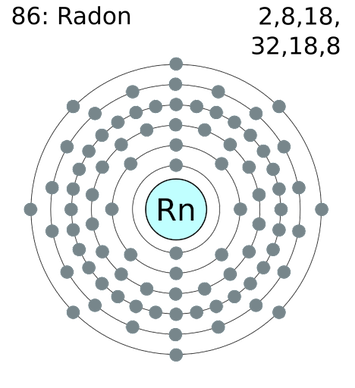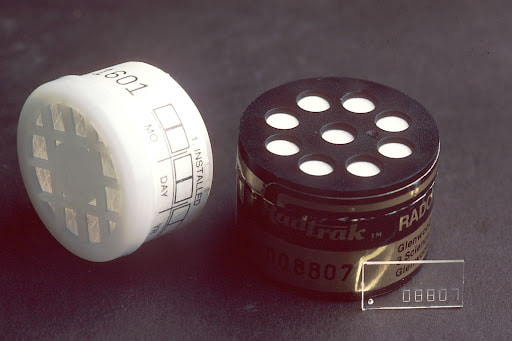|
A radon mitigation system is used to reduce radon levels in your home; however, it will not work instantly. There are different factors to consider when trying to determine how long it will take for your radon mitigation system to work in your home. Standard systems are effective within 24 hours of installation, but in order to get an accurate reading, it's best if you wait for at least 72 hours before starting a new radon measurement. What is Radon Mitigation?Radon mitigation is the procedure of reducing risk associated with radon gas by extracting the radon gas straight from the ground underneath your home, which results in greatly reducing the radon concentration. This gas is colorless and doesn't have a smell, so it's impossible to know how much radon is present through the use of your human senses alone. Since radon gas is one of the leading causes of lung cancer, it is essential to get it checked once in a while. There are many ways to test radon levels, including getting an assessment with a certified Radon Contractor who will take readings throughout your home. If you don't want to consult a certified expert, you can always do the radon testing yourself. How Long Does It Take To Work?The answer to this question depends on a few factors, including the type of system installed and the level of radon in your home prior to installation. Generally speaking, however, it can take anywhere from a few days to a couple of weeks for a radon mitigation system to work effectively. If you have a passive system, it may take longer to see results as the system relies on natural airflow and pressure differential to draw out the radon gas. An active system, on the other hand, uses fans to force air through the system and out of your home, so you will most likely see results quicker. Of course, the level of radon in your home will also play a role in how long it takes for the mitigation system to work. If you have a very high level of radon, it may take longer to see a significant reduction. However, even if it takes a little bit longer, a mitigation system will eventually bring the level of radon down to a safe/low level. If you're concerned about the amount of time it is taking for your mitigation system to work, the best thing to do is to contact a professional. They can test your home's radon levels. They can also inspect your radon mitigation system for any deficiencies and then let you know if the system is working as it should. Radon mitigation systems reduce radon levels in the air by pulling radon gas up from the ground below basement or crawl space through pipes and into the fresh air outside your home. The typical radon mitigation system will begin lowering levels within 24 hours and continue as long as the fan runs. These systems may also help lower basement humidity by redirecting the moisture from the ground and expelling it to the outside along with the radon gas. Factors That Influence the Speed of Radon RemovalIn an ideal scenario, removing radon from the home would begin hours after testing is complete and the appropriate mitigation equipment is installed. That isn't always the case, though. Radon mitigation might be delayed due to a few independent factors: Type of Radon TestQuick tests can only be conducted at your house for a few days. If you choose to use a radon monitor to perform a quick test, you can get an instantaneous reading of the radon concentration in your home during that period. Long-term testing, which assesses radon levels yearly, can be time-consuming because they take months to complete. The Age and Size of The HomeOlder homes with many cracks and crevices can have higher infiltration rates These cracks and crevices may be in places where people cannot see and/or access, thus making it harder for mitigators to find all areas where the gas can enter. Previous Attempts at Mitigating Radon Levels in The HomeSometimes, if a previous attempt has not been successful, there will be a small improvement over time. For example, if just sealing off some cracks does not stop gas from seeping through other cracks in the same foundation, installing an active sub-slab depressurization system would be a viable solution. Alternatively, placing the room, in which the cracks are located, under constant positive pressure will work as well. External Radon SourcesIf radon comes from a location other than your house, such as water flowing through the ground into wells, installing a mitigation system within said well would be beneficial. Mitigation System TypeMost radon mitigation systems are designed to be set up in a day. More powerful mitigation systems, or more complex systems, may take longer to set up. In addition, even when the system is installed correctly, homeowners should still regularly monitor their radon levels because they could fluctuate depending on external conditions like soil composition, any nearby construction, abnormal weather patterns, or changes in pressure differentials. How Soon After Mitigation Can You Retest For Radon?Once the radon mitigation system is installed, it is wise to keep testing. At the very least, you should allow twenty-four hours for the radon levels in your home to decrease after installing a new system. The retest must be completed no more than thirty days after the installation. Generally, if the radon level falls below 4 pCi/L (or 200 Bq/m^3 if you are in Canada), there is little need to retest. However, suppose the reading remains above 4 pCi/L (or 148 Bq/m^3). In that scenario, you will need to hire an expert contractor who can determine what additional steps need to be taken before resuming any form of indoor activity, such as construction or using utilities. FAQsHow Much Does Radon Mitigation Process Cost?The price depends on many factors, mainly the region and state where you live. The cost of radon reduction ranges typically from $750 to $2,500, but the price might go as high as $7,000 for a big home or property with many foundations. How Do You Know If The System Is Working? If you want to check the functionality of your radon mitigation system, use the u-tube manometer. Observe the contents of the tube. There is no internal pipe pressure if the readings are identical on both ends. If the fan isn't pulling the air in, your radon mitigation system isn't functioning. Are Radon Mitigation Systems Effective 100% Of the Time? The EPA has found that they have a 99% success rate in certain situations. If you've had radon mitigation done in your house, but if the readings remain high, or roughly at around 4 pCi/L (or 148 Bq/m^3), you chose the wrong radon contractor. This amount of radon in a home is a trigger point. In that case, we suggest you consult a different, certified contractor.
1 Comment
Radon is a radioactive, natural gas that is colorless, tasteless, and odorless. It is formed in rocks and soil when small amounts of uranium begin to decay. Owing to heat and air pressure, it rises up into the air as particles. It has 136 neutrons. In this article, we will tell you everything you need to know about the element radon, and its neutrons. A Breakdown of RadonRadon is one of the most common radioactive gasses because it can be found in soil and rock all over the planet. It is otherwise known as radioactive decay, and it stems from radium. Radon is a type of noble gas that is formed in soil when radium begins to decay. Some landscapes are more prone to radon particles in the air, and those living in homes where radon levels are on the higher end of the scale have to be mindful of regular testing and therefore take various measures to control the exposure to ensure it doesn’t put their health at risk. Radon on the Periodic Table
Basic Information About Radon
What are Neutrons?A neutron is a type of particle found in the nucleus of every atom, with the exception of simple hydrogen. A neutron has no electrical charge, so it is considered ‘neutral’ - hence the name. It differs from a proton because it has a greater mass and is denser. Is Radon Dangerous?Radon is a radioactive gas, which, in large doses, can be extremely harmful (and sometimes fatal) to humans. Radon is fine in small doses. Because it is found in both rock and soil, which makes up inhabitable human land, there’s no way to avoid it entirely. However, when radon levels become too high, they can cause damage to our lungs that may eventually result in lung cancer. It is the second leading cause of lung cancer in the United States. Radon Levels - When Should We Be Concerned?Radon is measured differently depending on where in the world you live, meaning danger levels depending on what country you’re in.
If so, you may need to conduct more regular household tests to ensure your safety. How are We Exposed to Radon?As radon is a radioactive gas that is emitted from rock and soil, it rises up into our homes and workplaces, and we breathe it in without realizing it. Once the decomposed molecules of radon enter our lungs, they continue to decay, which further releases more radiation, which is now directly in our systems. However, to be clear, while most of us breathe radon every day, this doesn’t necessarily mean we are in harm’s way. This is the importance of testing. How to Test for RadonThe good news is testing for radon in your property is easy and inexpensive. You can either hire a professional company to do this for you (which will be the more costly option of the two) or purchase a short-term or long-term DIY test kit and test your home yourself. Short-Term Radon Test KitShort-term radon test kits are designed for those who would like to check the radon levels in their space quickly. Please note, however, the minimum amount of time a short-term radon test kit can be performed is 2-10 days, depending on the radon detector you use. If your home or workplace has a basement, the best place to put your radon detector is in the crawl space above your basement. Long-Term Radon Test KitA long-term, DIY radon test kit will need to be performed for 90 days or longer. This is a useful option because radon levels fluctuate all the time, so a longer test period will allow you to monitor those fluctuations better. As with the short-term test kit, the best place to put the detector is in the crawl space above your basement. If you don’t have a basement, however, the ground floor is a good choice. For those in high-story apartment blocks, you can opt to place the detector in your kitchen, bedroom, or living room. This way, you will be able to see if the radon levels are reaching you. Both the short-term and long-term test kits are environmentally-friendly, deployed all over the world, and the results are analyzed by a highly-accredited lab. There are no hidden fees, and the turnaround time for results is much quicker than that of store-bought DIY radon tests. Frequently Asked Questions (FAQs)How can I keep myself safe from radon?Non-smokers are in a better position to radon exposure than smokers, as their lungs are less damaged, so not smoking is a good place to start. If you live in high-radon areas, you can install a radon mitigation system in your home to regulate the levels in your home. Keeping your space well-ventilated is also a good way to lessen your exposure. How does radon enter my home?Radon enters through openings in the floor, such as cracks, gaps around pipes, floor drains, wall cavities, and so on, and rises upwards. It is colorless, odorless, and tasteless, so while we may not know it is there, we may still be breathing it in. What is the science behind radon?Radon is one of the chemical elements with the "Rn" symbol. It is arguably the most common chemical element because its decay chain occurs within soil.
There are 37 stable isotopes, and it belongs to the radium and uranium decay chain. Some professionals may refer to radon gas as alpha decay, which is a type of radioactive decay that involves an atomic nucleus which emits alpha particles, otherwise known as helium nucleus. The most stable isotope of radon gas is 222Rn, which has a half life of 3.832 days. It is a zero valence noble gas, and despite being a radioactive gas, it isn't very chemically reactive. |
AuthorI am a professional radon technician who enjoys writing about radon to spread awareness of this harmful, radioactive gas. Archives
February 2023
Categories
All
|





 RSS Feed
RSS Feed
